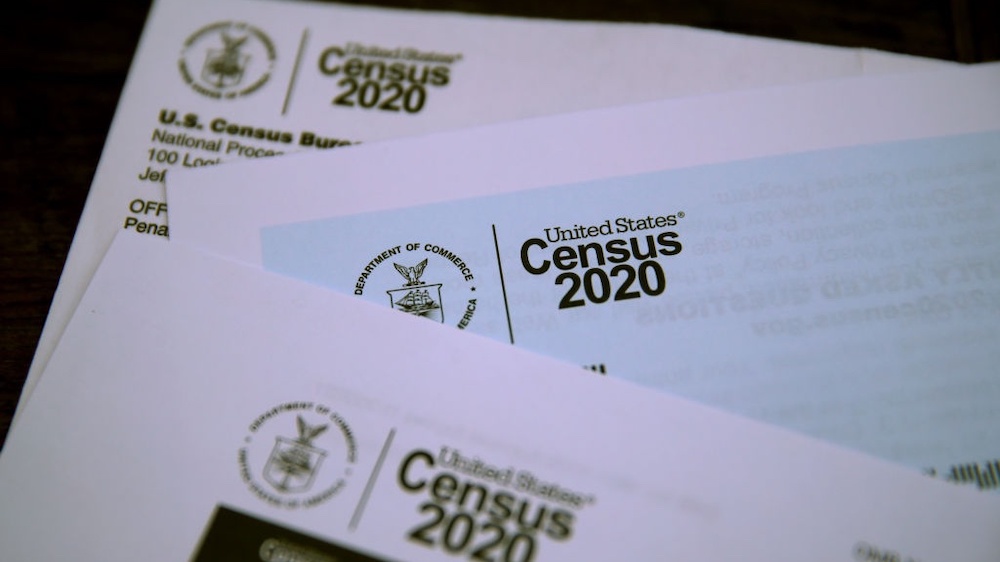If you’re interested in sharing your opinion on any cultural, political or personal topic, create an account here and check out our how-to post to learn more.
____
As we celebrate the life and legacy of the Honorable John Robert Lewis and all of his contributions to the struggle for our right to vote, it is necessary to make the connection between the census and voting. Before the 2013 Supreme Court decision Shelby County v. Holder struck down Section 4 of the Voting Rights Act of 1965, census data was used to determine whether jurisdictions were in violation of the Act.
If you simply forgot, visit my2020census.gov to complete it online using the device you are using to read this article. Count everyone living in your home on or before April 1. The census is a count of the entire population, citizens and non-citizens. The census asks nine simple questions and information is kept private and confidential, by law. Census data determines how our communities will be funded and our political representation for the next 10 years. If you need more convincing on why you need to be in the number, keep reading.
1. Why are we still conducting the census during a global pandemic?
Article 1, Section 2 of the United States Constitution reads that an enumeration of the population takes place every 10 years to apportion representatives. Apportionment refers to how each state receives its share of members in the House of Representatives based on its population. This count has happened every 10 years, in the year ending in zero, since 1790. Prior to the passage of the 13th and 14th Amendments and the Emancipation Proclamation, Section 2 defined population as “the whole Number of free Persons, including those bound to Service for a term of years, and excluding Indians not taxed, three-fifths of all other Persons.” At the time, all other persons referred to enslaved Africans.
2. Money
Billions of dollars in funding from the federal government is distributed to states, municipalities and organizations based on decennial census data. Federal programs and grants base their funding formulas on decennial census data. Funding for education — Head Start, public schools, Special Education, Pell Grants and Student Loans for college — libraries, parks, hospitals, healthcare, Medicare, infrastructure/highway improvements, emergency services, senior programs, small business resources, SNAP, WIC, Section 8, community development block grants, unemployment insurance, HIV, Domestic Violence programs, school breakfast and lunch, Medicaid and many more. If we want our communities to be funded at the maximum level, we need to complete an accurate census count.
3. Political Power
Political representation on all levels of government is based on decennial census data. The constitutional purpose of the census is to determine each state's congressional representation. After each state receives its population data, the process to re-draw all city, state and federal political district lines begins. Congressional, state legislative, city council, school and election district lines are redrawn every 10 years, after the decennial census, during a process called redistricting. If we want elected officials who represent us, we must complete the census.
4. The Electoral College
After the 2016 presidential election, where the candidate who lost the popular vote became president, for the second time since 2000, everyone was up in arms about the Electoral College system. People called for the Electoral College to be abolished, but people rarely discuss how each state receives its share of electoral votes. There are 538 total.
Article 2, Section 1 of the United States Constitution states, “Each State shall appoint, in such Manner as the Legislature thereof may direct, a Number of Electors, equal to the whole Number of Senators and Representatives to which the State may be entitled in the Congress:” Every 10 years, after the census, states receive their share of the 435 House reps based on their census population count. The population is counted and divided by 435. There’s an estimated 330,000,000 people living in the United States. Divide that by 435 and you get 759,000. For every 759,000 your state has, your state receives a representative to the House of Representatives.
Because certain populations historically do not respond to census surveys — for various reasons — our congressional representation has not been distributed among states correctly; therefore, our electoral votes are not accurately distributed among the states. While we may believe the Electoral College system is antiquated, it’s the system we have at this time. If we want the states to have accurate Electoral College representation, we must complete the census.
5. Data is used to make decisions for our communities.
We often talk about showing up and showing out. Completing the census is how we do that, in government terms. Businesses, organizations and our government use census data as the basis for decision making all the time. If our presence is not reflected in the data, the government certainly will not have to meet our needs. Do you need increased bus service or sanitation? How many hospital beds does this community need? Does your community need an additional elementary school or a senior center?
Now, I know at times they don’t meet our needs even when we are in the data. In those incidences, organizations that advocate, and litigate, when our rights are violated can use the data to support their cases. Census data is also used to respond to emergencies and disaster response and recovery. It will be used to respond and recover from COVID-19.
Completing the census is easy. For the first time ever, there are four ways to do it: online at my2020census.gov, by phone, by mail and with a census taker.
If I haven’t convinced you, check out the National Urban League’s report on the state of Black count and the impacts an undercount will have on our communities across the country.
